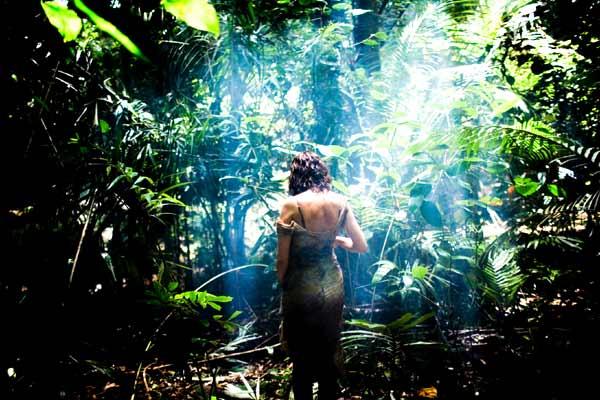
Vinyan (Movie Review)
It's a cinematic fact that any film that takes place in the jungle has a hard time not evoking Joseph Conrad's "Heart of Darkness", and "Vinyan" is no different. Paul is an international volunteer who, with his wife Jeanne, has taken up residence on the beach in Thailand after the loss of their son in a recent tsunami. The opening scene shows Paul carry a brand new pair of children's shoes he found in the closet out to Jeanne, who explains that they were on sale. This scene describes the relationship that transpires between Paul and Jeanne throughout the film. She still believes that their son is alive, while Paul wants to believe, but understands the impossibility.
While attending a benefit, Jeanne thinks she sees their son in a documentary that is being played about orphan communities in Burma (Myanmar). Overcome with certainty, Jeanne convinces Paul to venture into Burma to search for their son. Through friends, they hear that the only way into Burma is through a network of underground drug dealers. Through a series of mishaps, Paul begins to doubt that they will ever find their son, but continues the journey as if drawn to a destiny he cannot predict.
While Vinyan is a beautifully shot film, it will most likely not please genre fans. It is more a horror film for art house snobs or members of Amnesty International, focusing mainly on the relationship between Jeanne and Paul, as it slowly disintegrates due to the loss of their son. Children are also important to the film in a more broad sense, as the documentary which begins the search begs the question: What happens to children when there are no parents to instate order? The final half of the film focuses on this question as Jeanne and Paul find themselves in the presence of a creepy tribe of feral children.
The film itself is gorgeous, from the opening scene where we are bombarded with water bubbles to a surrealistic red dream sequence, almost every scene has something beautiful to attract the eye. Even with the great visuals, there are times when the film lingers too long in a particular scene, making the camera work feel a little too emotionally involved. While Jeanne is slowly loosing her sanity throughout their journey, there are far too many shots of her looking thoughtfully into the distance.
Other shots work better, for example, having alluded to feeling her son in the room, Jeanne looks to the side while her Paul are having sex and we see a little boy watching from the side of the bed. Jeanne does not react, but instead stares lifelessly at the boy. The film seems to be dabbling in horror when it could really use fewer long shots of forest and more surreal dream footage, which is not something that I would normally find myself saying. While the pacing picks up in the third act, it congeals around the middle as the focus is shifted towards Paul and Jeanne's journey into Burma, and away from the psychological struggle that burdens the couple.
A collaboration between "Irreversible's" cinematographer, Benoît Debie, "Inside's" sound director Frédéric Meert, and the director of "Calvaire", Fabrice Du Welz, "Vinyan" has all the pieces in place to be an amazing film. For the cinematography alone I would say you should give it a shot. Frédéric Meert captures the foreign sounds of the jungle while still using the jarring static noises that will be familiar from "Inside". The opening scene in particular shows the seamless combination of both. Following the credits, we are shown an unending storm of bubbles rising to the surface from underwater. Slowly the sound, which is at first muffled, becomes identifiable as the screams of a child, and the water turns red. The shot is so simple and jarring that it sets an unsettling tone, one that is unfortunately not maintained throughout the rest of the film.
Admirably difficult to categorize, "Vinyan", while considered a horror film, contains too many elements that do not play directly into the genre. I would describe it more as a drama focused around horrific events: loss of a child, poverty, human worth, marriage problems, and psychological turmoil, which might be too many topics for the average horror fan to consume. Also, besides the creepy dream sequences, the picture is bottom weighted in the horror department. There is only one sequence containing gore, which I fear is the sole reason this film is labeled as "horror". There are ghosts that are alluded to (this is where the title comes from), but sadly that idea is never really played to its full potential. Instead, we are left with ominous children and a couple that argue as much as Leonardo Dicaprio and Kate Winslet in "Revolutionary Road". In other words, not a great combination for horror fans.

